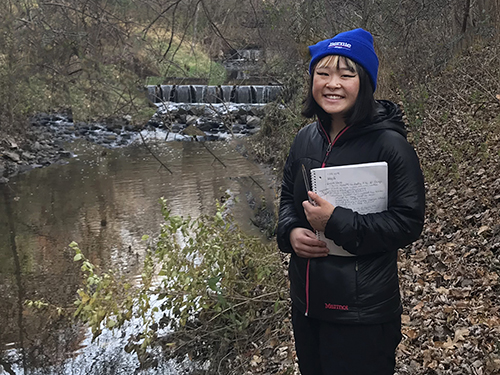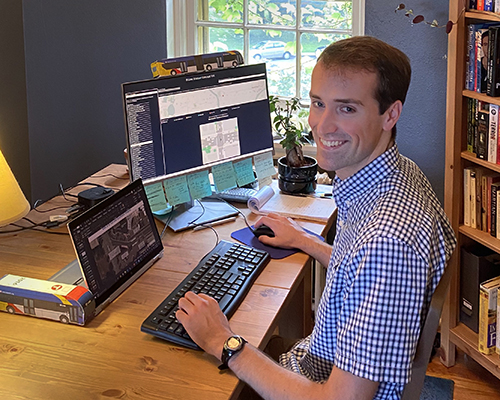Despite many challenges posed by the COVID-19 pandemic, the Met Council’s summer intern program narrowly escaped collapse last spring and emerged with 25 students earning their keep in jobs embedded across the agency. Almost half the cohort are working in Metro Transit.
We had expected to hire 101 interns for the summer before COVID-19 shut down normal expectations in March. But many positions had to be cancelled because they required too much face-to-face time.
“It was pretty hectic during late winter and we nearly called it off this year,” said Human Resources Manager Luis Martinez, who manages the program. “But we saved many of the positions, and I know both the Council and the interns are grateful we succeeded.”
Martinez said almost all the summer interns are working from home but stay in touch with their managers through regular online meetings.
“The interns we hired rose to the challenge and adapted to working at home,” Martinez said. “In fact, it’s going very well and is a new aspect of our program that will probably continue in coming years.”
Several interns share highlights from their Council experiences
 Sarah Gong
Sarah Gong
University of Minnesota
Major: Human Resources and Industrial Relations
As a Parks Ambassador in Community Development, Sarah Gong has been actively involved in several projects designed to improve equity and access to the regional parks system by underserved youth in the Twin Cities. She also is working on an environmental justice project, and a project about understanding the housing preferences of Housing Choice Voucher recipients.
Gong said she’ll be taking a lot away from the experience. “The thing I’ve learned most is how to work with self-confidence. I’ve met a lot of great people and mentors around the Council who have helped bring out the best in me and have encouraged me to challenge myself. Being in research has helped me think strategically, and I’ve learned how to find patterns through data, delegate meetings, and be a leader for my teams,” she said.
Marisa Thompson
University of Wisconsin-River Falls
Major: Computer Science Information Systems
Working with Asset Protection at the Metro Transit Police Department, Marisa Thompson has had the opportunity to shadow staff in the technology department and in the Transit Control Center, which is “central control” of the whole operation. She also has been reviewing transit video and helping upgrade on-board technology.
A highlight has been working with Metro Transit’s Homeless Action Team (HAT). “I’ve come to really understand what the HAT team does day to day,” Thompson said. “Hearing so many stories and being hands-on with those who are less fortunate was really an eye opener and inspired me to want to work with the homeless outside of my internship.”
 Ben Tomhave
Ben Tomhave
University of Minnesota
Major: Urban and Regional Planning
Ben Tomhave dropped into a fast-growing area within Metro Transit to develop future bus rapid transit (BRT) lines. As a transit rider himself, he said “it’s exciting and motivating to think that the work I am performing this summer could directly impact my future commute.”
Not only is he learning the details of taking a project from start to finish, he’s learning how BRT fits into the regional transportation network. “For example, when planning and designing where future stations will be placed, I’ve learned just how much staff must coordinate across multiple departments and agencies,” Tomhave said.
“Such collaborations allow the group to produce a cohesive project that is integrated with all other uses and transportation modes that occur within the right-of-way.”
Freddy Fernandez
University of Minnesota
Major: Civil Engineering
Working on the Southwest Light Rail project has been an eye-opening experience for Freddy Fernandez. “I’m learning so many things in this internship every single day!” he said.
“I like to see everything that goes on [on the job site] and learn what the crew is doing and why they’re doing it. I’m responsible for tracking all the pile that is placed in the Southwest Station. Using this information, I can calculate the total cost of pile used compared to the initial estimated cost. I’ve also learned to read plan sheets and then go to the site and understand what is taking place there.”